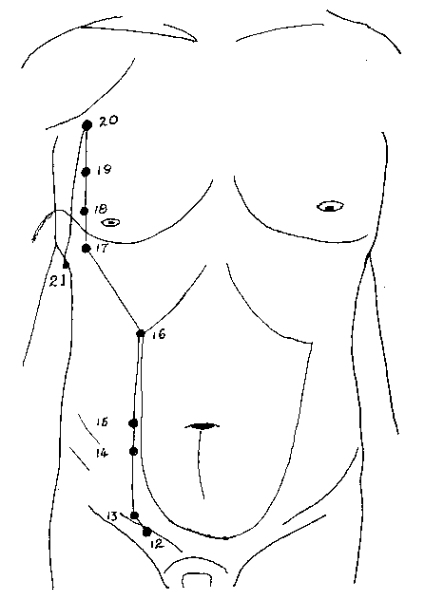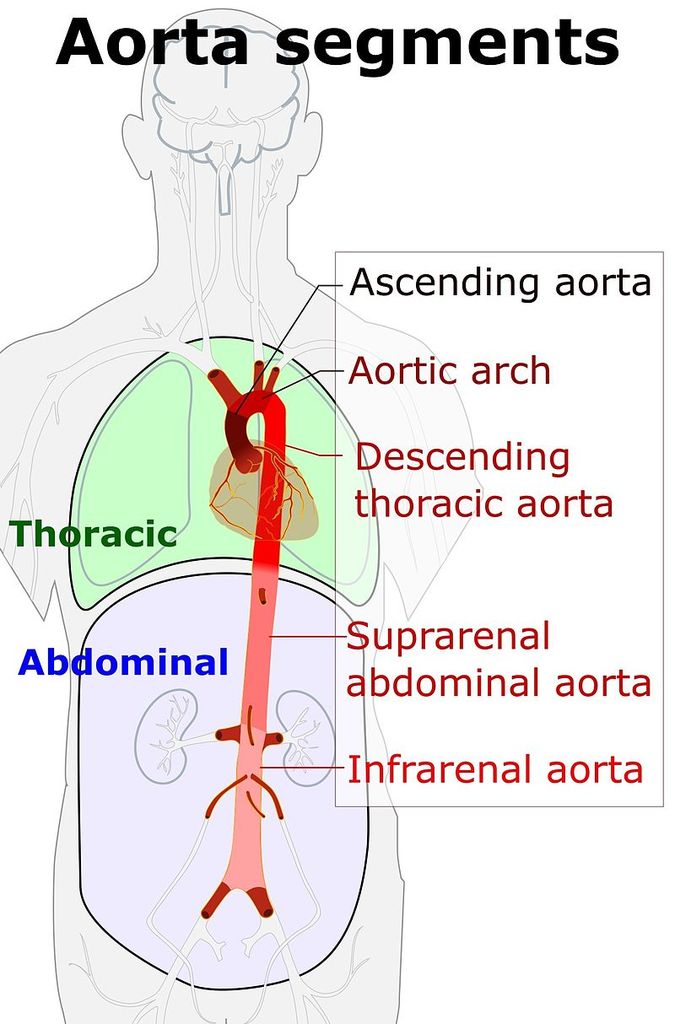Spleen Meridian Pressure Points
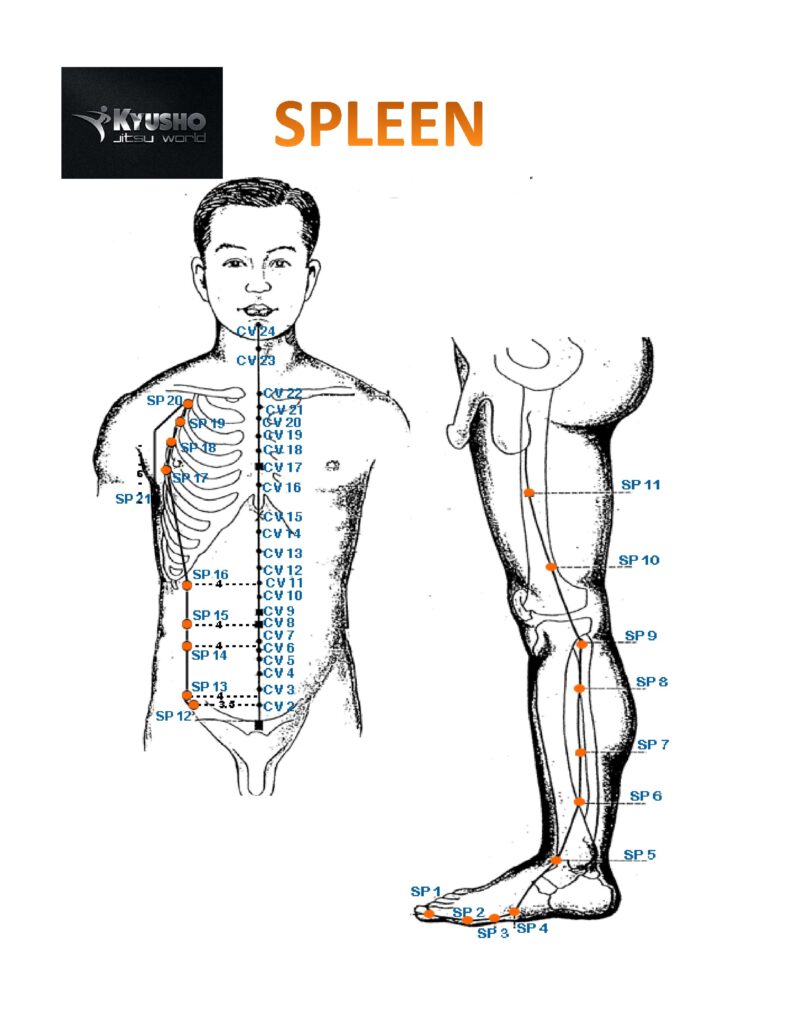
The Spleen Meridian:
The Spleen Meridian is a YIN meridian (polarity) found on the lower body. This is an earth element meridian with the energy flow direction being Centripetal or entering the body.
There are a total of 21 pressure points on Spleen.
With reference to the 24-Hour Diurnal Cycle of the Body, the Spleen Meridian is most active during the time of 9:00 am to 1100 am.
The correct “striking action” is to penetrating.
Unit of Measure is the "Cun"
SP-01:
SP-01 is located on the medial side of the big toe, about 0.1 cun posterior to the corner of the toe nail.
If this pressure point is activated with a solid stomp there will be an immediate affect on the health of the Spleen.
Being that it follows Stomach in the Diurnal cycle it will also have a negative effect on the Stomach itself.
SP-01 is an Underlying Indicator Point.
Damage to the toe and the surrounding muscles is also very likely. This is an excellent pressure point for setting up a knockout. Even light contact with the area will yield a result.
This is a strong healing pressure point, however it works with the sugar insulin balance and you need to educate yourself before using it.
SP-02:
This pressure point is located on the medial side of the big toe, distal and inferior to the 1st Metatarsals joint, at the junction of the darker and lighter skin.
This is a great pressure point to cause pain! It is activated by squeezing with the hand. This will cause enough pain for any attacker to release their hold. A Dim Mak strike to this pressure point will cause immediate Spleen damage, resulting in nausea as the energy in the Stomach meridian backs up.
SP-02 is an Underlying Indicator Point.
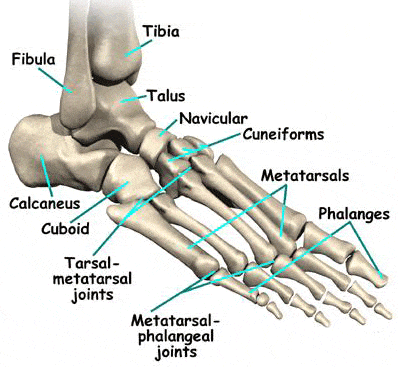
SP-03:
SP-03 is located proximal and inferior to the head of the 1st metatarsal bone, at the junction of the change in skin colouring.
Because of the nerve situated in the area, a solid strike or squeeze will result in GREAT PAIN and a shock feeling shooting up to the hip area. The pain is intense enough to cause the attacker to disengage. They may attempt a second attack unless they find the pain to be too discouraging.
SP-03 is an Underlying Indicator Point.
SP-04:
This pressure point is in the depression distal and inferior to the base of the 1st metatarsal bone, at the junction of the skin colour change or roughly 1 cun behind the joint of the big toe. SP-04 is also a Confluent Pressure Point as well as a Collateral Pressure Point.
Not only will a strike to this pressure point cause great pain, it will also cause dizziness and has the potential for a knockout. The pain associated from the strike can last for days and even cause “sleepless nights”. A Dim Mak energy strike can also cause health issues with the Spleen, therefore caution should always be used.
As as Confluent Pressure Point activation of SP-04 weakens the stomach area and the GI Tract
SP-05:
Located depression distal and inferior to the medial malleolus, midway between the tuberosity of the navicular bone and the tip of the medial malleolus.
This is an important pressure point! This has to do with its location at the ankle joint. A strike to this pressure point will not only cause damage to the joint itself, but will also cause a secondary release of the knee joint at SP-09. On a larger opponent this can end the attack quickly as the joint tears apart due to the fall from the loss of balance.
SP-05 is an Underlying Indicator Point.
SP-06:
Also referred to as “Triple Yin” because of the intersection of the 3 Yin meridians at this pressure point. It is located 3 cun directly above the tip of the medial malleolus, and the posterior border of the tibia, on the line drawn from the medial malleolus to SP-09.
A solid strike here will cause a release of the ankle joint primarily assuming the weight is on that foot. Secondarily the knee joint will release resulting in an uncontrolled fall, especially on larger attackers. Due to the intersection of the 3 Yin Meridians of the lower extremities in the vicinity, SP-06 is an excellent pressure point to setup a knockout.
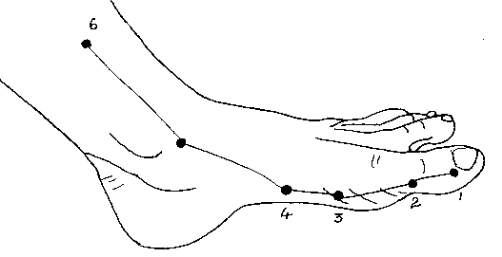
SP-07:
Located 6 cun above the tip of the medial malleolus, 3 cun above SP-06, at the posterior margin of the tibia.
A strike here will cause immediate, great pain thus affecting the attacker’s ability to walk and remain mobile.
SP-08:
The location of this pressure point is 3 cun below the medial condyle (knuckle) of the tibia, on the line connecting SP-09, and the medial malleolus, between the posterior margin of the tibia and the soleus muscle.
Striking here will cause an immediate numbness of the lower legs. It is reported to also cause Stomach and Bladder issues resulting in the attacker urinating from the strike. Needless to say this humiliation is usually the end of the confrontation.
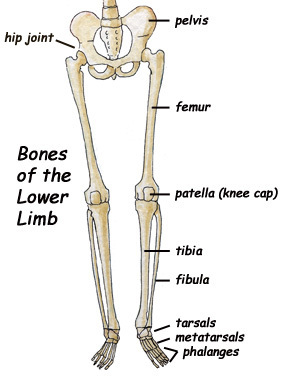
SP-09:
SP-09 is located on the lower border of the medial condyle (knuckle) of the tibia, in the depression between the posterior border of the tibia and the gastrocnemius in the upper part of the origin of the soleus muscle.
This is not the easiest pressure point to access with a strike even for a seasoned martial artist. However, success will result in great pain, and numbness causing walking to be a challenge.
SP-09 is an Underlying Indicator Point.
SP-10:
When the knee is flexed, this pressure point is located 2 cun above the medio superior border of the patella, on the bulge of the medial portion of the quadriceps femoris, at the superior margin of the medial condyle (knuckle) of the femur, in the medial margin of the vastus medialis muscle.
This is a great “pain” pressure point. Have you ever hit this one by accident? The entire leg goes numb and the brain becomes disoriented for a few moments. The ability to walk is lost for some time depending on the severity of the strike.
SP-11:
Located 6 cun above SP-10 at the medial aspect of the satorius muscle on the line drawn between SP-10 and SP-12.
This is one of my favorite pressure points as striking it is rather easy and the result is devastating! The pressure point is located on top of the femoral nerve branch, directly beside the femoral artery.
This becomes an important neurological knockout pressure point. A solid strike to the region can potentially cause a break in the femur, which can result in a tear of the femoral artery. The brain will shut the body down to protect the femoral nerve and the artery.
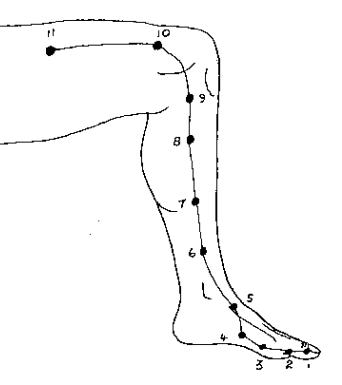
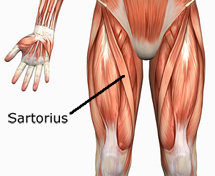
SP-12:
Located superior to the lateral end of the inguinal groove, on the lateral side of the femoral artery, at the level of the upper border of the symphysis pubis, 3.5 cun lateral to Conception Vessel 2 (CV-02).
Striking this pressure point can cause immediate and severe damage to the femoral artery. The strike can cause damage to the femur at the hip, as well as damage to the hip itself. Damage to the femoral nerve can also paralyze the leg.
NEVER use this pressure point as a demonstration point! Liver 12 (LV-12) is also located in the same space.
This is a VERY dangerous pressure point!
SP-13:
This pressure point is located 0.7 cun above SP-12. This pressure point will cause the same type of damage as the SP-12 strike.
SP-14:
Located 3 cun above SP-13, 1.5 cun below SP-15, on the lateral side of the rectus abdominis, 4 cun lateral to the CV-12.
When the opponent is not expecting the strike, this pressure point can shock the entire body potentially causing a knockout. This is only a good pressure point for striking when unexpected because of the large and strong muscles in the area that can absorb much of the impact.
SP-15:
Located 4 cun lateral to the centre of the umbilicus, on the mamillary line, lateral to the rectus abdominous, in the external and internal oblique and the transverse abdominous muscles.
Catching someone off guard with a strike here will cause an immediate release of the bowels.
SP-16:
This pressure point is located 3 cun above SP-15. Once again this is an easy area to protect. However, if a strike is landed it will cause the diaphragm to spasm and result in the inability to catch one’s breath.
SP-17:
Located 6 cun lateral to the Conception Vessel, or 2 cun lateral to the mammillary line, in the 5th intercostal space.
Hitting this one is a fight stopper. All the recipient will want to do is stop the pain and be able to breathe. The massive amounts of nerve endings in the intercostal spaces make these pressure points excellent for self defense.
SP-18:
This pressure point is 2 cun lateral to the nipple or 6 cun lateral to the Conception Vessel, in the 4th intercostal space.
A solid strike here will basically shut down the body and send shock waves to the head. A strike to the left side has the potential to stop the Heart. Caution should always be used when training with pressure points located around the ribs.
SP-19:
SP-19 is located 1 rib above SP-18, in the 3rd intercostal space, 6 cun lateral to Conception Vessel.
Best attacked using a finger jab, this pressure point is interesting as it controls the power to the opposite leg. Therefore, if you strike to SP-19 on his right side, the left leg will be affected. This shows an interesting association with the corpus callosum in the brain.
SP-20:
Located 1 rib above SP-19, lying directly below LU-01, located in the 2nd intercostal space. It is also 6 cun lateral to the Conception Vessel.
This pressure point is like SP-19 as it affects the leg on the opposite side of the body and is therefore tied directly to brain functions. Used with LV-14, this is a potential death strike.
SP-21:
SP-21 is located on the mid-axillary line, 6 cun below the axilla, and midway between the axilla and the free end of the 11th rib in the 7th intercostal space.
The numerous functions of this pressure point are astounding! Striking causes an enormous amount of Chi damage in the body as well as disrupting the balances of the Chi and Blood sides of the body. Rib damage resulting in a Lung puncture is also very possible since this is the weakest point on the rib cage. Knockouts usually occur.
A Dim Mak energy strike on the left side of the body has the potential to bruise the Heart and/or the aorta (one of the main Heart arteries).
This is perhaps the MOST dangerous pressure point on the body, especially on the left side!
SP-21 also falls under different categories for pressure point types
